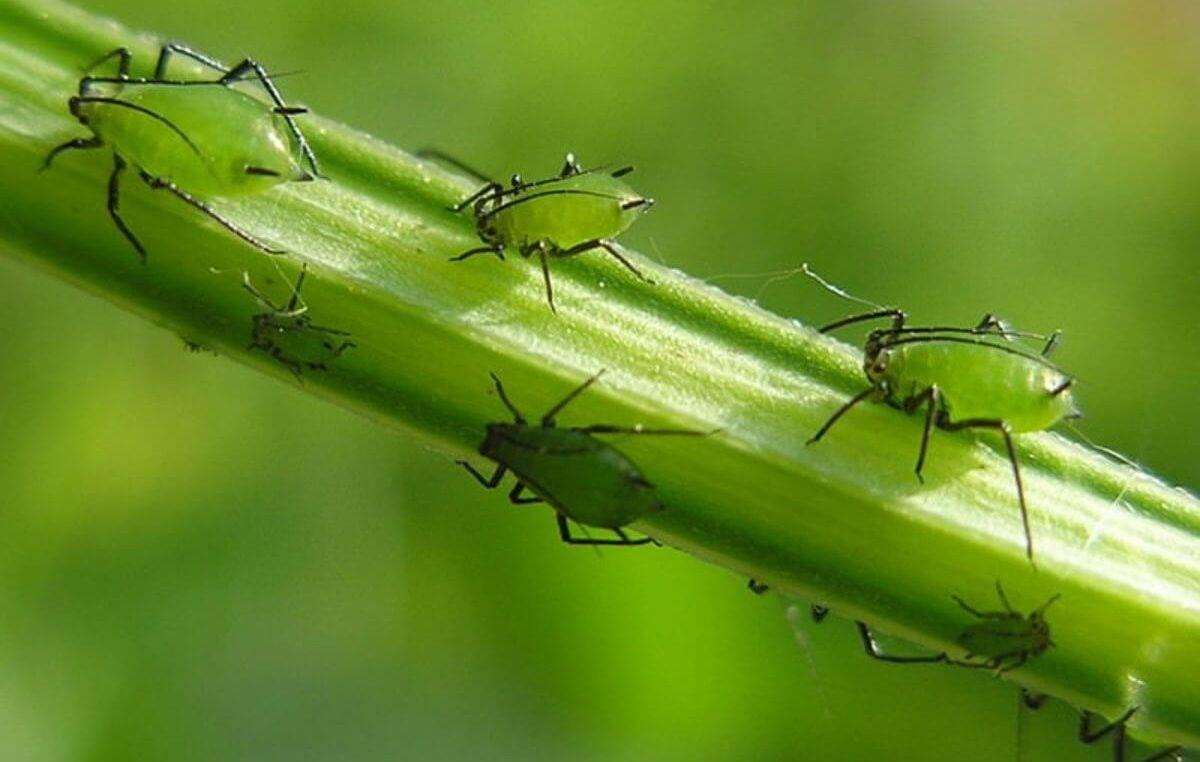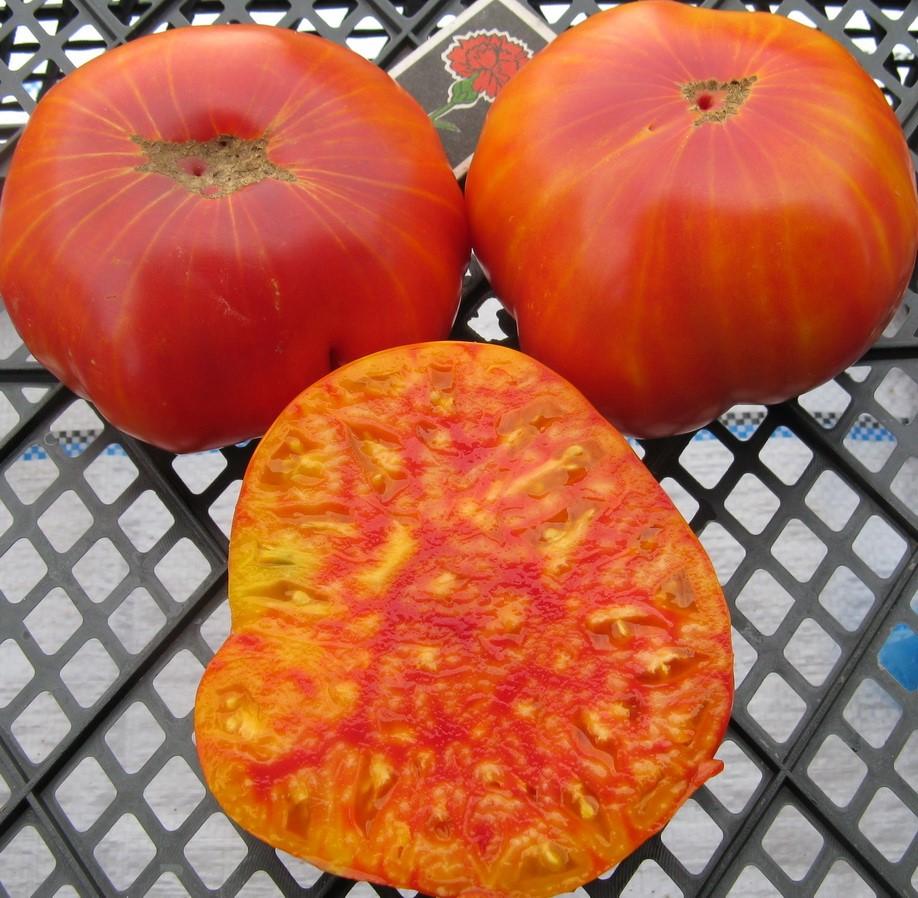Content
Aphids on tomato seedlings prevent the plant from bearing fruit. If no action is taken, the parasite will destroy the crop. The insect can be dealt with in different ways - mechanical, biological, folk or chemical.
Description and types of pest
Aphids can be winged or wingless. The body shape resembles a pear and reaches about 0.1 cm in length. The parasite prefers tomato leaves because they contain sweet juice. The old foliage hardly suffers - only the young ones get it.

There are more than four thousand species of aphids in nature; fortunately, only a small part of them attack tomato seedlings
This is a cunning insect that can adapt to the external landscape. For the parasite to change its color, it only needs to swallow one small drop. The pigment contained in the juice acts with amazing speed. With its help, the body turns light green.
The following types of pests are common in Russia:
- Potato large aphid. His favorite food, as the name suggests, is potatoes. Since the crop is planted everywhere in the country, the insect can be found in different regions.This is a large parasite that reaches a length of 0.4 cm. Depending on the age, the color may vary - usually yellow or green. If the owner has managed to process the potatoes, the aphids will attack more vulnerable plants. Often these include tomato seedlings. Appears in early spring and becomes more active after warming.
- Melon aphid. Not as large a pest as the previous one. Body length is about 0.2 cm. The color is yellow-green, some individuals may be black. The insect attacks tomato seedlings in mid-May. Optimal conditions for reproduction are temperatures above 24 °C. In mid-summer, the number of aphids decreases, and a month later it increases again. The pest prefers not only tomatoes, but also other melons - cucumbers, cotton, etc. Once damaged, the plant will not be able to bloom. If the crop does manage to recover, it will produce much less fruit.
- Peach greenhouse aphid. It moves with the help of its legs and has no wings. Grows up to 0.3 cm. The color may vary - depending on the juice of the crop eaten. After the attack, young tomato seedlings turn into a sieve. Nutrient sap stops flowing to all areas, slowing down the growth process. After massive damage, the leaves fall off. The parasite also feasts on peppers, cabbage, watermelon and potatoes. Attacks in July.
A separate point is to consider the signs of damage to tomato seedlings by aphids and the reasons for their appearance.
Signs of defeat
Aphids leave behind holes in the leaves and deform shoots. Trying to defend itself, the plant begins to curl its leaves. Weakened immunity creates the preconditions for the development of sooty fungus. It weakens all seedlings, clogs pores, and delays photosynthesis processes.It is very difficult to rid tomatoes of the fungus.
Why do they appear?
Since tomatoes are often purchased with soil, parasite larvae can hide in the soil. Under favorable conditions, they will begin to develop until they become adult pests. Aphids on indoor tomatoes will not only destroy the crop, but also stain the entire room.

Several thousand insects can parasitize tomato seedlings
When frightened, aphids release pheromones to warn other participants in the meal about the danger.
When purchasing a variety, you need to carefully examine it for the presence of aphids. Even if you don’t buy soil, the larvae can hide under the leaf blade. The insect prefers a warm, dry room with a temperature of about 28 °C and constant air circulation. In such conditions, it will quickly multiply and take over other flowers. If there is a plot next to the house, it may also suffer.
Most often, the female forms a clutch in the root region or stem. The eggs wait out the winter, and with the onset of warm weather they turn into larvae, etc. One individual produces offspring per 100 insects. They grow at an astonishing rate and will be ready to attack leaves within seven days of hatching. Ants monitor the safety of the masonry.
What harm do they cause?
From undigested tomato juice, the parasite creates a microscopic film that prevents oxygen from reaching the pores of the leaves. The lower parts of the plant suffer first from attacks.After there is a little juice, the aphids move to the top. A delicacy for insects are young and soft shoots. The seedlings become deformed, causing stress to the crop. Because of this, the amount of harvest is reduced. In the event of a mass attack, the tomato dies.
The insect is a carrier of viruses. They can be dangerous to other plants. Pests undermine immunity and make seedlings resistant to heavy rains.
How to deal with aphids on tomato seedlings
If aphids begin to attack tomatoes, you must take action immediately. You can fight the parasite using different means. Some have a weaker effect, others, on the contrary, are too strong. The plant cannot always recover from the latter. When choosing, you need to rely on the health of the seedlings and the rate of insect damage.
Mechanical methods
To keep the leaves intact, you can spray the aphids with a stream of water. It is enough to direct it at the plant, and the parasite is unlikely to survive such an attack. The surviving individuals will remember this day for a long time. However, this will not stop others. The method is short-term, so it is better to use it to temporarily scare away tomato seedlings.

When using a hose, it is important not to damage or flood the tomato seedlings themselves.
Another remedy is to cut off misshapen areas of tomatoes. For prevention, they need to be burned. There is no need to worry about the safety of the variety; in this case, it will quickly recover. But the ants will lose their delicacy and will not transport the aphids.
The disadvantage of the mechanical method is its weak effect. The procedure must be repeated several times a week.
Biological drugs
You can fight for the life of tomatoes, armed with a biology textbook.It is enough to pit the aphid against the ladybug, which is its worst enemy. By analogy, lacewings and hoverflies are propagated. In one day they eat up to 150 pests.
If the case is gaining momentum, you can use biological drugs. Experts recommend treating plants:
- Akarin. Tomatoes are sprayed with a spray bottle. The aphids are destroyed after two days of use.
- Fitoverm. The leaves are irrigated in dry weather; rain can wash away the substance. A few hours after spraying, the pest flies away from the treated shoots and dies within the first week.
- Bitoxibacillin. As in previous cases, the insect’s body is destroyed by bacteria. The effect is quick.
Folk remedies
Insects can also be dealt with using folk remedies. These include the use of ash, soap solution, ammonia and vinegar. It is enough to spray the leaves and shoots with one of the listed substances. The effect is short-lived.

Aphids on tomato seedlings can also be used for their own purposes, for example, in Iran they are added to alcohol tinctures to give a special taste
Chemicals
The most severe response to aphid attacks is the use of chemicals. Insecticides cause paralysis in the insect. To improve the properties of a chemical, various means are used. Gardeners advise treating seedlings early in the morning. No work is carried out in rainy weather.
Common drugs:
- "Funafon". While devouring the leaves, the pest does not realize that it is ingesting a deadly poison along with the juice.It is recommended to eat tomatoes no earlier than 10 days after processing.
- "Alatar." The effect is similar to the previous product, but it is a stronger chemical. The harvest is harvested after three weeks.
- "Aktara". It does not work immediately, you have to wait about five hours. The insecticide is popular due to its high resistance to weather conditions. Keeps on seedlings for up to 2 months. Process twice - before and after harvesting the fruits.
The drugs are diluted in accordance with the instructions. If you use small doses, the product may not have an effect. On the other hand, large concentrations will destroy the plant.
Prevention measures
In order not to create preconditions for the emergence of aphids, after the end of the season, all weeds are removed, and a new chemical solution is added to the soil. If the pest attacked tomatoes last year, there is no need to create new seedlings in the same place.
The plant must be inspected every day, trying to look under each leaf. Sometimes it is enough to remove the affected part of the plant so that the aphids stop reproducing. Treatment begins immediately after detection. If this is not done, the insect will spread not only throughout the seedlings, but throughout the entire garden.

Aphids suck juice from tomato seedlings using a long, sharp proboscis.
In combination with other means, plants with a strong smell are planted - mint, onions, garlic, mustard, basil. Adult aphids love moisture. To reduce its concentration, drainage is formed in the ground. Try not to oversaturate the soil with nitrogen. If an anthill appears on the site, you need to take measures to remove it.
Conclusion
Aphids on tomato seedlings can be a real disaster. Therefore, it is important to take timely measures before it spreads.The owner can use a specific control method or organize complex treatment.











